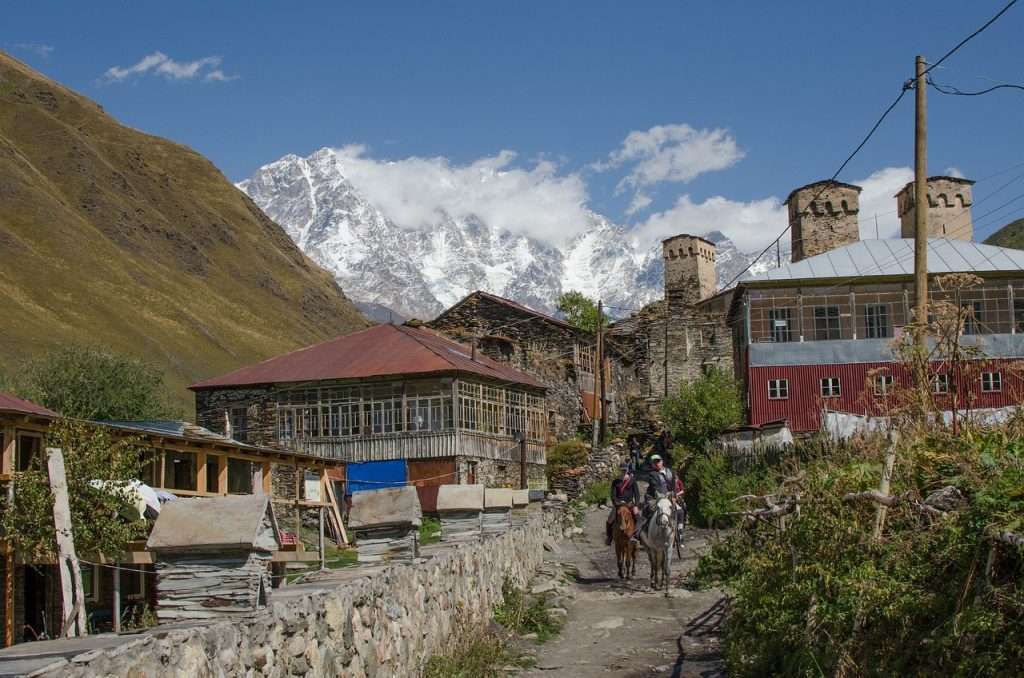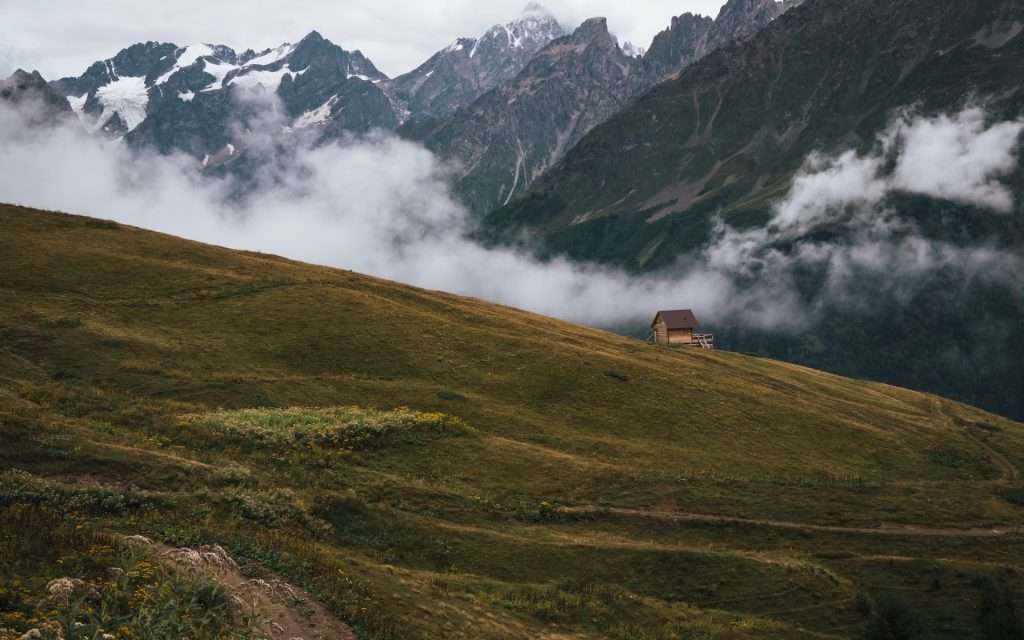Svans in Georgia: Unraveling the Threads of National Identity
What is Svaneti?
Svaneti is Georgia’s rugged Caucasus highland region, home to the Svans—an ancient mountain people whose stone towers and living traditions are woven into the nation’s spirit.
The Svans are an indigenous community perched high in Georgia’s Greater Caucasus, whose unique language, fortress-homes, and polyphonic music have shaped centuries of Georgian culture. In this article, you’ll learn who the Svans are, how their Achaemenid-era origins inform medieval tower-towns, and why the 1996 UNESCO listing of Upper Svaneti safeguards both stone and story. We’ll cover their endangered Svan language, seasonal festivals, signature landmarks like Ushguli at 6,890 ft, and modern preservation efforts—equipping you to appreciate this extraordinary mountain heritage.
Origins & Historical Context
Human presence in Svaneti dates back to the Bronze Age (c. 3000–1200 BC), as shown by tools, kurgans, and ritual vessels housed in the Lentekhi Lado Museliani Museum of Local Lore . These finds confirm that early Svan communities participated in Georgia’s nascent metallurgical traditions and agrarian lifeways.
By the 6th century BC, Svaneti lay astride trans-Caucasian trade routes linking Achaemenid Persia to the Black Sea, exporting grain and livestock and even supplying mercenary contingents to Persian satrapies . The onset of the Little Ice Age (5th century AD) severed high-altitude passes, isolating mountain clans until the Medieval Warm Period (c. 950–1250 CE) reconnected them and drew Svaneti into the sphere of the expanding Georgian Kingdom.
Classical geographer Strabo (1st century AD) described these mountain tribes as “fierce, free, and hardly accessible,” likely referring to early Svans who zealously guarded their autonomy north of ancient Iberia . Despite periodic tribute to Georgian eristavs (princes), local councils and patriarchal lineages maintained self-governance well into the first millennium CE.
The medieval era witnessed the rise of Svaneti’s signature architecture: between the 9th and 12th centuries, clan families constructed tapered stone towers up to six storeys tall, each with an elevated entrance and machicolations for defense . These towers coalesced into fortified village-hamlets—centred around newly built Lamaria and Shaori churches—signalling a communal strategy of resilience that endured through Ottoman incursions and into the late 19th century.

Language & Svan Polyphony Traditions
Svan (ლუშნუ ნინ Lušnu nin) is a Kartvelian tongue that diverged from proto-Kartvelian over 2,500 years ago.
Endangerment status: UNESCO’s Atlas classifies Svan as “definitely endangered”—children no longer learn it as a mother tongue in the home .
Revitalization efforts: Since 2020, Georgia’s Ministry of Education has introduced pilot Svan classes in Mestia primary schools, the first state-backed initiative to teach the language formally .
Literary codification: A 2022 study by the Georgian National Academy documents early grammar guides and a new Svan–Georgian dictionary project .
Festivals & Customs
Lamproba (spring fire-rite): Torchlit processions to welcome warmer days.
Kvirikoba (July): Honoring Saints Cyricus and Julitta with feasts.
Lifandali (September): Ancestral remembrance by communal bonfires.
Svan Polyphony
Their three-part harmony, rich in dissonance and drone, reflects mountain echoes. “Each chord evokes both prayer and earth,” writes ethnomusicologist Dimitri Arakishvili (Arakishvili 1984) .
Architectural & Natural Landmarks
What is a Svan tower?
A Svan tower is a tapered, multi-storey stone structure—up to 60 ft tall—built between the 9th and 12th centuries for communal defense and refuge.
Svan villages are defined by their imposing stone towers, constructed from local limestone and slate, rising like sentinels above ribbed slate roofs. These towers feature narrow arrow slits, machicolations for dropping projectiles, and a single elevated entrance—reachable only by ladder in times of siege . In Upper Svaneti’s Chazhashi hamlet alone, over 200 such towers cluster around medieval churches and communal plazas, their weathered walls echoing centuries of mountaintop vigilance.
Beyond architecture, Svaneti’s natural landscape dazzles with snow-capped giants and deep river gorges. Four of the Caucasus’ ten highest peaks dominate the skyline, including Georgia’s tallest, Mount Shkhara (17,073 ft), and the dramatic twin summits of Mount Ushba (15,453 ft), nicknamed the “Matterhorn of the Caucasus” for its spire-like profile.
Key natural landmarks:
Glaciers: Chalaadi, Ushba, Guli, and Adishi carve emerald lakes and rugged moraines.
Enguri Gorge: A 19-mi chasm traced by the turquoise Inguri River through ancient mixed forests.
Alpine zones: Between 5,900 ft and 11,500 ft lie temperate forests of spruce, fir, and beech, giving way to wildflower-studded meadows above the treeline.
For adventure seekers, Tetnuldi (16,321 ft) and Mount Laila (13,149 ft) offer world-class hiking and ski-touring. The Tetnuldi resort—opened in 2016—boasts cable cars ascending to 10,374 ft, blending modern lifts with untamed mountain terrain.
This fusion of human craftsmanship and raw mountain majesty makes Svaneti’s architectural and natural landmarks a UNESCO World Heritage treasure—where every tower and peak tells a story of resilience, community, and timeless beauty.
Beyond Assimilation: The Svans as Georgians
A common misunderstanding, especially among foreigners, is that the Svans are “assimilated” into Georgian society. However, this concept couldn’t be further from the truth. Svans have always viewed themselves as Georgians. To them, there aren’t “Svan” and “regular” Georgians – just Georgians.
Each region in Georgia boasts its own set of traditions, behaviours, dialects, and sometimes even languages. Yet, despite these differences, all consider themselves part of the Kartvelian family. The term “regular Georgian” is perhaps a misrepresentation, as it seems to imply that there is a standard or primary Georgian culture. Instead, Georgian identity comprises a spectrum of cultural nuances from different regions.

Clannish Mentality: A Mountainous Trait
The so-called “clannish” mentality, often associated with the Svans, is not exclusive to them. This mindset is prevalent among many mountain-dwelling groups. For instance, one might find Svans and Khevsurs more common than Svans and Imeretians. Mountainous regions, by virtue of their geography, often cultivate closed cultures that resist external change. This resilience and distinctiveness might make such groups appear more unique or distinct to outsiders.
Subethnic Groups: The Multifaceted Georgian Identity
Georgia’s national tapestry is woven from several subethnic Georgian groups—regional communities sharing an overarching identity yet preserving distinct customs, dialects, and landscapes.
Svans (Svaneti): Mountain dwellers speaking the endangered Svan language and famed for their defensive towers.
Mingrelians (Samegrelo): Inhabitants of the western lowlands, speakers of Mingrelian (closely related to Laz), using Georgian as their literary tongue.
Laz (Black Sea coast): Traditionally called Zan speakers alongside Mingrelians, living in Georgia and neighboring Turkey.
Kakhetians (Kakheti): Eastern plains vintners whose polyphonic songs and wine culture are central to Georgian folklore.
Imeretians (Imereti): Central-western region around Kutaisi, known for distinctive Imeretian cheese and festive culinary customs.
Gurians & Racha-Lechkhumi: Southwestern and northwestern highlanders, each with unique dialectal inflections and seasonal festivals.
All these subgroups share Eastern Orthodox Christianity, veneration of patron saints like St. George, and a legacy of mountain and border resilience. From the slate towers of Svaneti to Kakheti’s sun-kissed vineyards, their intertwined traditions form the rich, multifaceted Georgian identity celebrated today.
FAQ
Is any part of Svaneti off-limits to solo travelers?
Certain high-altitude trails (above 8,000 ft) are unmarked and best tackled with a licensed guide. Solo hiking on forested routes in winter is discouraged without local support.
How do I hire certified eco-guides?
Contact the Georgian National Tourism Administration’s official portal or local guesthouses in Mestia—they can arrange eco-certified guides trained in Leave No Trace principles.
Is Ushguli open to visitors year-round?
Parts of Ushguli remain accessible in mild winter, but heavy snow can close the mountain road (December–March). Summer months (June–September) offer the most reliable access.
What language will I hear in Svaneti?
Villagers speak Svan at home and Georgian for official business; most guides also speak Russian and English.
Can tourists explore inside Svan towers?
Towers are mostly private and structurally unsafe. In the Chazhashi museum-reserve, a few are stabilized for viewing—always ask permission before approaching.
What did we learn today?
Georgia’s identity is a complex blend of various ethnic groups, dialects, and traditions. While each group, including the Svans, has its distinct characteristics and history, they all come together to form the rich cultural landscape of Georgia. Recognizing the individual beauty of each thread is essential, but so is understanding how they come together to create the magnificent tapestry that is Georgia.

